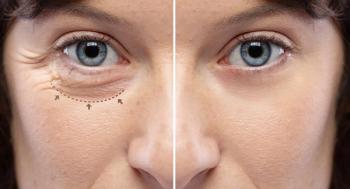
IOL-related advances increase satisfaction, improve toric outcomes
IOLs are proving to provide new options for cataract surgeons as well as entryways for more advanced research trials.
Reviewed by Malik Y. Kahook, MD, Samuel Masket, MD, and Mark Packer, MD
At the end of 2014, news about pseudophakic IOLs made headlines when the FDA’s Ophthalmic Devices Advisory Committee panel overwhelmingly recommended PMA approval of the AcrySof IQ ReSTOR Multifocal Toric IOL (Alcon Laboratories).
Approaching 2016, cataract surgeons in the United States are still waiting to access the technology and other premium channel implants available around the world.
Nevertheless, multiple noteworthy developments for pseudophakic IOLs occurred in 2015; Malik Y. Kahook, MD, Nick A. Mamalis, MD, Samuel Masket, MD, and Mark Packer, MD, spoke to Ophthalmology Times about recent and forthcoming advances.
New options for existing platforms
The introduction of lower add power multifocal IOLs-the AcrySof IQ ReSTOR +2.5 D Multifocal IOL (Alcon) and the Tecnis Multifocal +2.75 D and +3.25 D Multifocal IOLs (Abbott Medical Optics)-has been a great benefit considering the limitations of the previous versions of those platforms, noted Dr. Packer, clinical associate professor of ophthalmology, Oregon Health and Science University, Portland.
“The ReSTOR and Tecnis are really bifocal lenses with two distinct focal points, and so there is a gap area of lower acuity at intermediate distances,” he said.
Patients were not entirely satisfied with the original ReSTORE +4.0D because the near point was too close due to the add power and the diffractive surface on the front of the lens. And while near focus was not a problem with the Tecnis+4.0D due to the diffractive element being on the posterior lens surface, they would notice a blur between the near and distance vision, which happens to be where computer screens are normally positioned, he explained.
“Now with the lower add power versions and especially with the ability to provide blended vision using different power IOLs in the dominant and non-dominant eyes, it is possible to fill that intermediate space,” Dr. Packer said.
“These new lenses bring opportunity for achieving happier patients and really allow cataract surgeons to provide freedom from glasses for a vast majority of the people who elect multifocal IOL surgery,” he said.
Dr. Packer noted that the new lower add power multifocal IOLs are not perfect as they have not completely eliminated other issues associated with multifocal IOLs, such as halos and glare. However, the latter issues have been addressed by some novel design modifications to the ReSTOR +2.5 D, which include increased light distribution through the center zone combined with a reduced number of rings in the apodized diffractive multifocal zone (7 with the ReSTOR +2.5 vs. 9 with the ReSTOR +3.0).
More satisfied patients
“Patients seem to be happier with the lower power multifocal IOLs because they still deliver pretty good near vision and have the benefit of better intermediate vision,” said Dr. Mamalis, professor of ophthalmology, John A. Moran Eye Center, and co-director, Intermountain Ocular Research Center, University of Utah, Salt Lake City.
Another late 2014 IOL development for premium channel surgery was the introduction of an expanded range of powers for the Trulign Toric IOL (Bausch + Lomb). Originally, the Trulign was only available in mid-range powers (+17 D to +25 D), but the line is now available in powers of +10 D to +33 D, which makes it an option for more patients, Dr. Packer said.
Observing that the Trulign seems to have done well in the market, Dr. Packer cited excellent rotational stability as a factor.
“The Trulign lens really does not rotate at all, and so it is possible to get very accurate astigmatic correction,” Dr. Packer said.
Compared with the single-piece acrylic multifocal IOLs, implantation of the Trulign requires more attention intraoperatively and in postoperative follow-up to watch for capsular contaction that can affect lens performance, he said.
“This increase in monitoring really only involves scheduling the patient for one additional visit at 4-6 weeks after surgery to check the capsule, and most surgeons are willing to accept that small added burden because of the benefits of the lens,” he said.
Dr. Packer said he is looking forward to the eventual FDA approval of the toric version of Bausch + Lomb’s enVista single-piece hydrophobic acrylic IOL, which is still being evaluated in clinical studies in the United States.
“Once the toric model becomes available, it will give enVista users a new option to correct astigmatism using a familiar platform. Because of its glistening-free acrylic material, the enVista lens surface is very smooth, and it therefore can be rotated either clockwise or counterclockwise,” he said. “In that regard, the enVista is distinguished from the Tecnis and AcrySof toric IOLs that can only be rotated in a clockwise direction because of the tackiness of their haptics.”
Surgeons in the United States are also looking out for the Tecnis Symfony Extended Range of Vision IOL (Abbott Medical Optics), which was launched in Europe in 2014.
“With this lens there is a little fall-off in near acuity, but it looks quite effective at providing good uncorrected visual acuity at distance and intermediate vision,” Dr. Packer said. “Reportedly, the optical design also seems to reduce problems with halos, and so this is a lens that I am looking forward to becoming available in the United States.”
Dr. Mamalis noted the Symfony IOL combines two diffractive technologies with a change in asphericity that together serve to extend the depth of focus. Its design also reduces chromatic aberration that improves image quality.
“The Symfony IOL is technology that is being touted for addressing the degradation in image quality that occurs with multifocal IOLs,” Dr. Mamalis said.
However, optimal visual performance with the Symfony IOL depends on excellent centration (because of its asphericity) and minimizing residual astigmatism, he noted.
“It is very important that this lens be well-centered within the capsular bag and that surgeons control astigmatism when needed with laser or manual incisions,” Dr. Mamalis said.
In September 2015, at the XXXIII Congress of the European Society of Cataract and Refractive Surgeons in Barcelona, Spain, a new trifocal hydrophobic acrylic IOL from Alcon-the AcrySof IQ PanOptix-was the focus of significant attention.
“This particular lens seems to have been adopted by European surgeons fairly quickly, and particularly by those in Germany, and based on initial reports, users seem very happy with the outcomes,” Dr. Packer said.“Hopefully, Alcon will bring this lens to the United States in the future.”
He was slightly surprised by the success of the trifocal platform since he expected to see some loss in optical quality as a tradeoff given the implant’s more complex diffractive element.
“However, the optic seems to have been engineered well, and light transmission through the PanOptix is 88%, which is more than we see with the ReSTOR or Tecnis multifocal IOLs,” Dr. Packer said.
Preventing and improving negative dysphotopsia
Another IOL available in Europe on a limited basis is the Masket ND IOL Type 90S (Morcher). It is based on a design patented by Samuel Masket, MD, to eliminate negative dysphotopsia.
According to Dr. Masket, clinical professor of ophthalmology, Jules Stein Eye Institute, University of California, Los Angeles, who has had a longstanding research interest in this area, the interface of the anterior capsulotomy and the front surface of the posterior capsule IOL is a significant factor in the etiology of ND. He explained that the interface may cause a reflection of the anterior capsulotomy edge onto the nasal peripheral retina that patients perceive as a temporal dark crescent.
“Negative dysphotopsia can occur with any IOL implanted within the capsular bag, and while the true prevalence is unknown, it has been estimated to occur in 10% to 15% of patients in the early postoperative period. Considering the volume of patients who undergo cataract surgery each year, that is a significant number of people being affected by negative dysphotopsia,” Dr. Masket said.
Available evidence indicates that negative dysphotopsia can be prevented or improved when a posterior chamber IOL is placed in the ciliary sulcus, and it has never been reported with anterior chamber IOLs, he noted.
“In our surgical experience in a series of 47 eyes with negative dysphotopsia, we found that symptoms improved with use of the so-called reverse or anterior optic capture technique in which the haptic loops were kept in the capsule bag but the optic moved anterior to the capsule edge,” he said.
However, the downsides to leaving the optic out of the bag include the capsule’s tendency to contract and rapidly occurring fibrotic posterior capsule opacification. In addition, sulcus placement often means late decentration and iris chafing.
Based on that understanding, Dr. Masket created a design for an IOL that would be implanted in the capsular bag but features a novel rim that allows for a lip of the optic to override the anterior capsulotomy.
The Masket ND IOL is being evaluated in limited clinical trials, according to Dr. Masket.
“So far it has been implanted in 41 patients with no instances of negative dysphotopsia,” he said.
Because the optic is held firmly by the anterior capsulotomy, the Masket IOL also confers excellent IOL intraocular centration and stability, he said. That advantage translates into other potential benefits.
“If we can create a capsulotomy that is centered on the optical visual axis and the IOL can be perfectly centered with respect to the visual axis, we could eliminate any higher order aberrations induced by lens decentration and tilt,” Dr. Masket said. “That accomplishment would be particularly important for optimizing quality of vision outcomes with multifocal IOLs.” This means toric IOLS would not rotate off axis, he said.
Advancing IOLs
Driven by the aim to maximize IOL centration and stability, there is growing interest among European IOL manufacturers in developing products that are anchored by the anterior capsulotomy. The Bag-In-the-Lens (BIL) IOL (Morcher) developed by Marie-Jose Tassignon, MD, PhD, is one such example that has been available for some time. Even with its long history of use, there are no reports associating it with negative dysphotopsia, Dr. Masket said.
“However, the BIL IOL is not available in the United States, and it has not caught on among cataract surgeons elsewhere because its use requires surgeons to also create a posterior capsulotomy,” he added. “Oculentis is also developing an anterior capsule supported IOL, and I think we are just seeing the very tip of the iceberg of interest in this design.”
Achieving the precise capsulotomy that is needed to optimize outcomes with the anterior capsule-supported lenses will mandate use of an automated anterior capsulotomy, such as with the femtosecond laser or other tools now in development, Dr. Masket explained.
“I see capsulotomy-supported IOLs becoming very popular over the next few years,” he said.
At the Moran Eye Center, Dr. Mamalis and colleagues are continuing with research involving the Light Adjustable Lens (Calhoun Vision), which has been available outside the United States for years and is now being evaluated in an FDA pivotal trial.
“What is exciting about this lens is that it allows adjustment of the spherical power after implantation to correct any residual refractive error,” Dr. Mamalis said.
“In addition, it can be treated with different patterns to correct astigmatism and provide multifocality, and if the patient does not tolerate the latter and the treatment is not locked-in, the effect can be reversed,” he said. “Changeability is a nice feature of this lens.”
Residual refractive error
Anticipating a wave of baby boomers with a history of keratorefractive surgery coming to need cataract surgery, innovators have also been looking at other technologies that enable postoperative correction of residual refractive error. Within that category, the Harmoni Modular IOL (ClarVista Medical), invented by Dr. Kahook, is the furthest along. Dr. Kahook is The Slater Family Endowed Chair in Ophthalmology and professor of ophthalmology, University of Colorado School of Medicine, Aurora, CO.
The Harmoni IOL leverages a modular design that allows for multiple advantages over the traditional IOL.
“By having a separate optic and base, the base component can be made specifically for perfecting stability within the capsular bag, leading to improved effective lens position (ELP) and post-operative stability,” Dr. Kahook explained. “Improving ELP is now the Holy Grail in cataract surgery as far as achieving better first time results at time of cataract surgery.”
He said the Harmoni system was more stable post-primary implantation compared to market leading IOLs in a first in-human trial conducted last year in Manila, the Philippines with Harvey Uy, MD, and Cesar Espiritu, MD.
“In cases where the target refraction is not perfectly achieved, or in cases where the patients’ needs might change over their lifetime, the modular design will allow surgeons to atraumatically exchange the optic and enhance visual outcomes,” Dr. Kahook said.
The lens is designed to achieve targeted vision correction at the time of implantation and has shown great promise in early clinical trials. It is also designed to be a life cycle lens where it can address the visual needs of all patients, including intolerance of multifocal lenses, changes in astigmatism, or change in health status of the eye, he said.
At the beginning of November 2015, ClarVista secured European approval for the Harmoni Modular IOL. It is currently being evaluated in a second global clinical trial, and as Dr. Kahook noted, the company has a large runway to move forward as it closed series B funding for $14.5 million in 2015. The funding will also allow for developing the Harmoni system for other aspects of eye care independent of refractive surgery.
Dr. Mamalis observed that the Harmoni IOL is appealing considering that in the annual survey of ASCRS and ESCRS members, incorrect lens power has consistently been the third most common reason for explantation. It also has potential value for use in pediatric cataract surgery where surgeons implanting a primary IOL are faced with the challenges of estimating the child’s future refraction or having to do an IOL exchange or piggyback procedure.
Investigational lens outlook
U.S. cataract surgeons are still awaiting a true accommodating IOL to offer patients seeking presbyopia correction. The FluidVision IOL (PowerVision) is continuing to be evaluated in clinical studies outside of the United States. The vision outcomes and accommodative amplitude remained stable after two years in eyes implanted with the FluidVision IOL, Louis “Skip” Nichamin, MD, reported at the 2015 meeting of the American Academy of Ophthalmology.
The lens is a silicone oil-filled implant and features large balloon haptics that move the oil into the optic in response to accommodative movement in the eye, resulting in change of curvature of the optic surface and better near vision. Once the eye relaxes from accommodation, the oil goes back into the haptics and the curvature changes to provide distance vision.
Other companies are working to develop accommodating IOLs using this same principle, but none of the competitors are close to entering into clinical trials yet, Dr. Mamalis noted.
Preloaded lenses
Two new preloaded lens systems became available to cataract surgeons in the U.S. in 2015: the Tecnis iTec Preloaded Delivery System for inserting the Tecnis 1-Piece IOL (Abbott Medical Optics) and the UltraSert Preloaded Delivery System for the AcrySof IQ Aspheric IOL (Alcon). These preloaded systems represent good news for surgeons, Dr. Packer said.
“Preloaded lenses are really the future and will overcome the challenges many surgeons face because they are operating in locations where the surgical scrub nurses are not dedicated to cataract surgery. Preloaded systems overcome lack of familiarity with loading the IOL into the injector and would also be expected to reduce the possibility of contamination,” he explained.
In addition, Bausch + Lomb introduced an enhanced version of its BLIS Injector System that was first available in 2014. The BLIS injector is designed to deliver the enVista IOL. The modified injector gives surgeons improved control for IOL implantation through a 2.2 mm or larger incision. The major difference found on the enhanced BLIS injector compared with the previous iteration is its lengthened, softened and tumble-polished plunger. Measuring 2 mm longer than the original injector, the longer design facilitates IOL placement in the capsular bag.
“Compared with the first version that required greater attention to detail in terms of haptic placement, the enhanced BLIS injector is much easier to use and particularly facilitates implantation through smaller incisions,” Dr. Packer said. “Using the new BLIS injector, implantation of the enVista IOL is pretty much foolproof.”
Because of its temperature-sensitive polymer material, however, Dr. Packer noted that the enVista IOL still unfolds fairly slowly, though it is possible to hasten the process by either keeping the IOL warm or using a warm ophthalmic viscosurgical device (OVD).
At the start of the case, surgeons can place the IOL or OVD on top of the phaco machine or have the circulating nurse keep the materials in his or her pocket, Dr. Packer suggested.
Improving refractive accuracy with toric IOLs
Another development in 2015 was the refinement of toric IOL calculators that take into account the effect of spherical power, Dr. Packer said.
“Spherical power affects the surface curvature of the lens and the toricity. As presented by Uday Devgan, MD, at the 2015 Hawaiian Eye Meeting, the toricity of a 20 D toric IOL is different than that of a 28 D toric IOL, and when that is taken into account, outcomes are better,” he explained.
“Now there are toric calculators that take that difference into account by adjusting the toric power for the spherical equivalent. These include the Holladay IOL Consultant and Surgical Outcomes Assessment Program and the Barrett Toric Calculator. Now it will be interesting to see if the toric IOL manufacturers revisit and reprogram their product-specific calculators.”
Dr. Packer added that manufacturer revisions to their toric IOL calculators would involve getting FDA approval, but is unlikely to be a major hurdle because the companies should be able to easily show the proposed modification provides improved results.
Malik Y. Kahook, MD
Dr. Kahook is a consultant to Alcon, Allergan, Aerie Pharma, ClarVista Medical, New World Medical, Shire, Tempest Medical, Foresight Vision, and Mile High Ophthalmics. He holds patent interests with Alcon, AMO, ClarVista Medical, Mile High Ophthalmics, Glaukos, and New World Medical.
Samuel Masket, MD
Dr. Masket owns patents/royalties for Morcher.
Mark Packer, MD
Dr. Packer is a consultant to Advanced Vision Science, Aerie Pharmaceuticals, Alcon Laboratories, Bausch + Lomb, International Biomedical Devices, i-Optics, LensAR, Oculeve, Promedica International, Rayner Intraocular Lenses, Refocus Group, SOLX, STAAR Surgical Company, Transcend Medical, and VisionCare Ophthalmic Technologies. He holds equity in Eyenovia, Iantech, International Biomedical Device,s LensAR, mTuitive, Refocus Group, Transcend Medical, TrueVision Systems, and WaveTec Vision Systems.
Newsletter
Don’t miss out—get Ophthalmology Times updates on the latest clinical advancements and expert interviews, straight to your inbox.













































.png)


